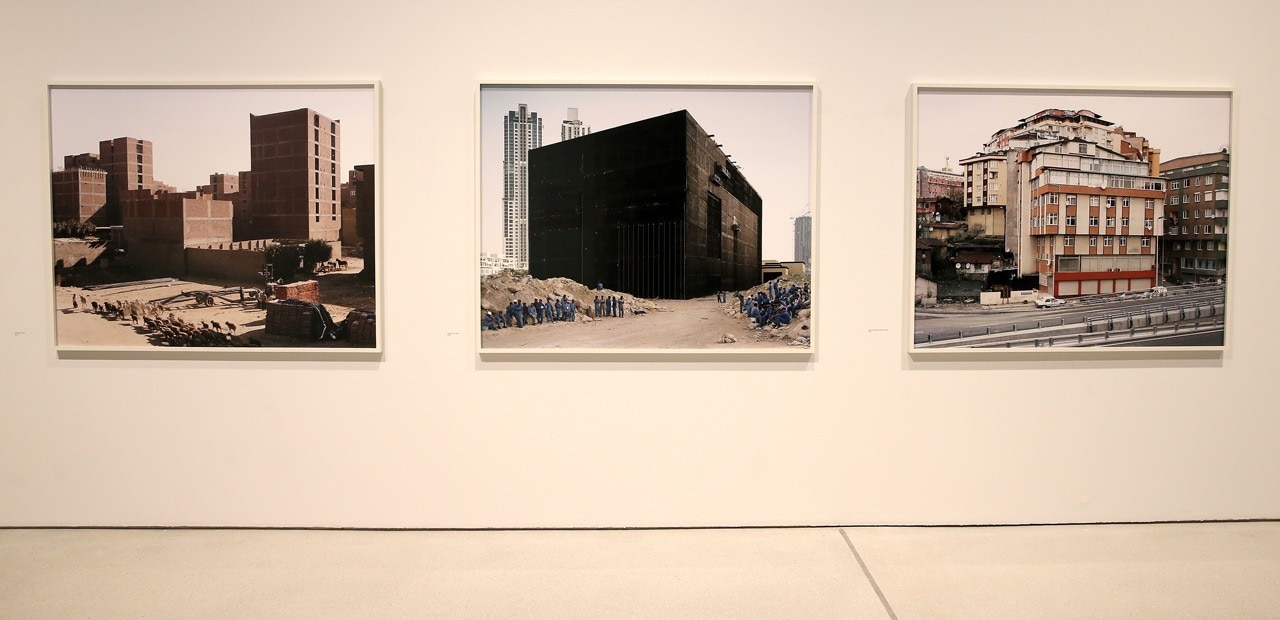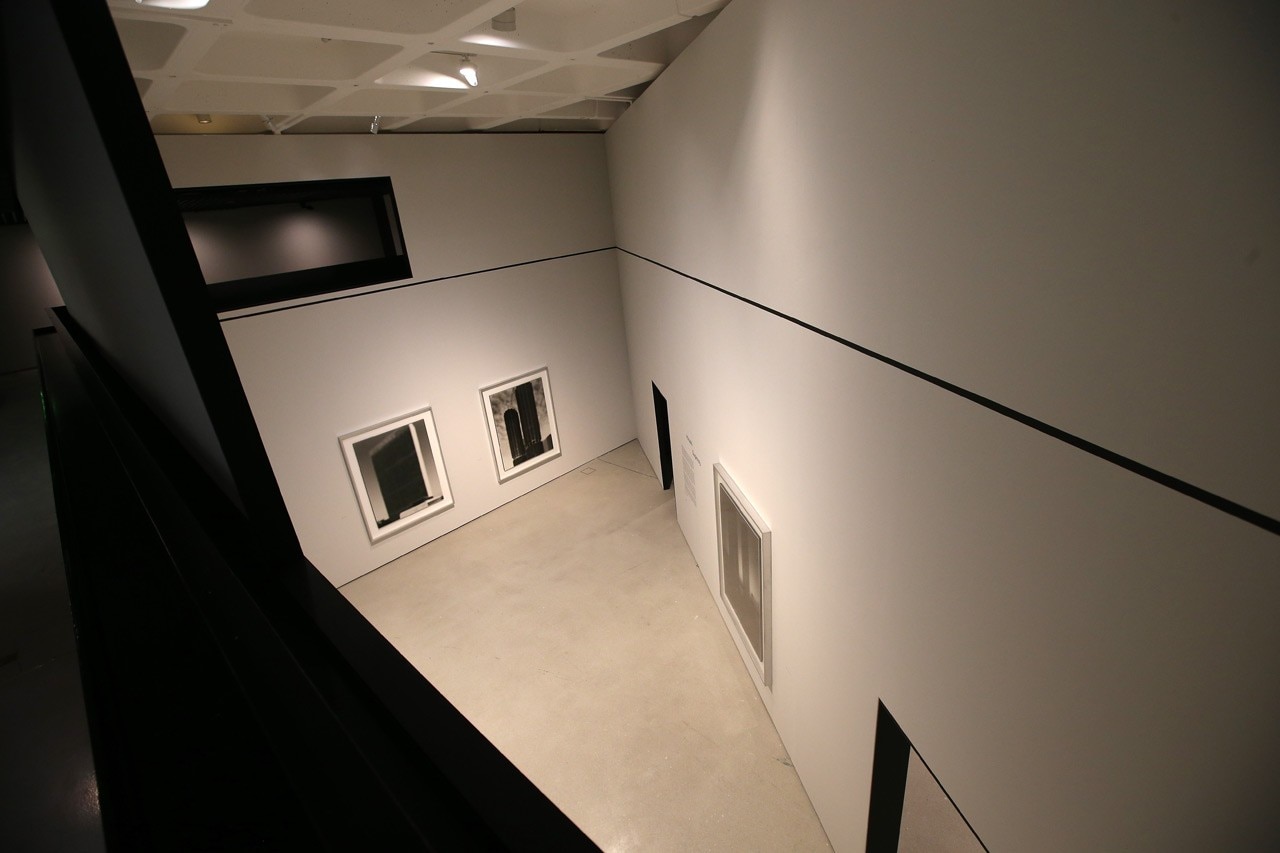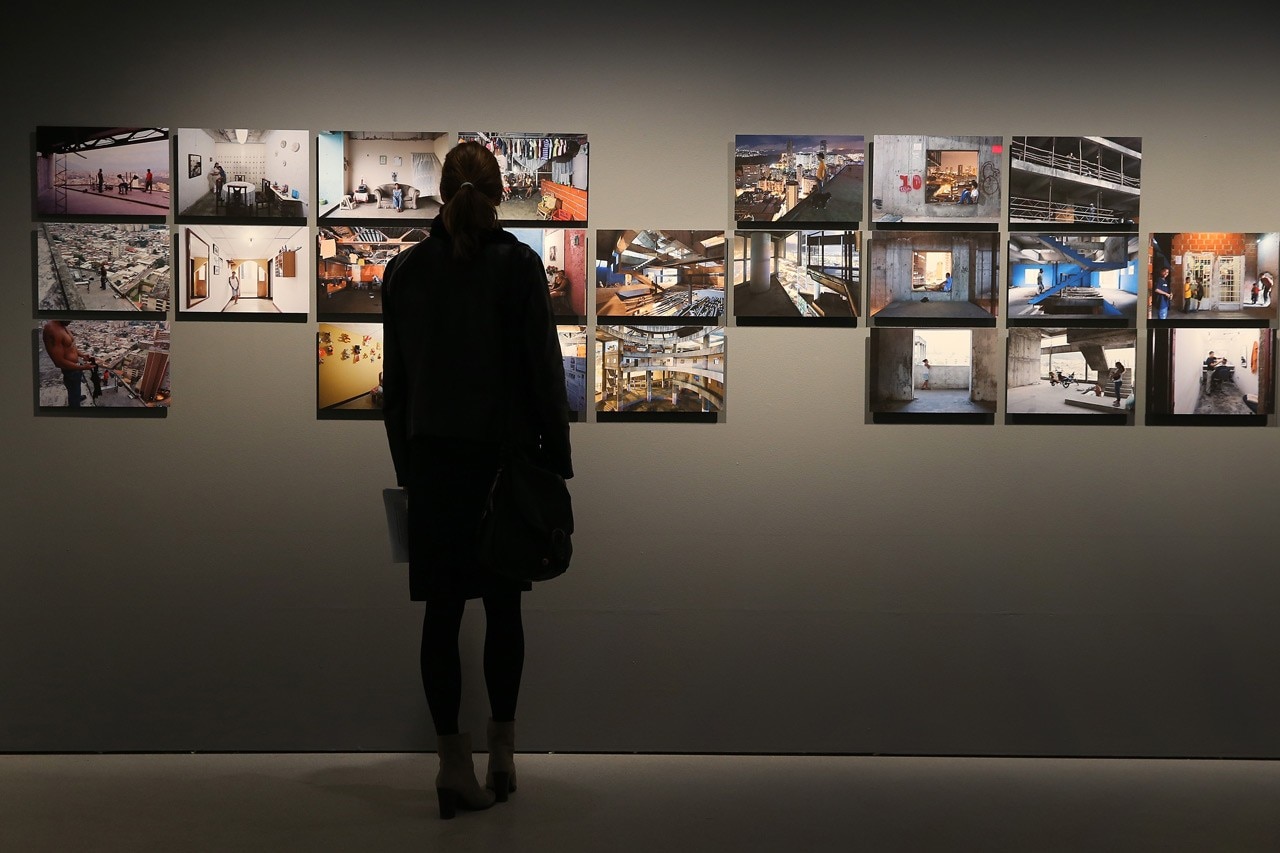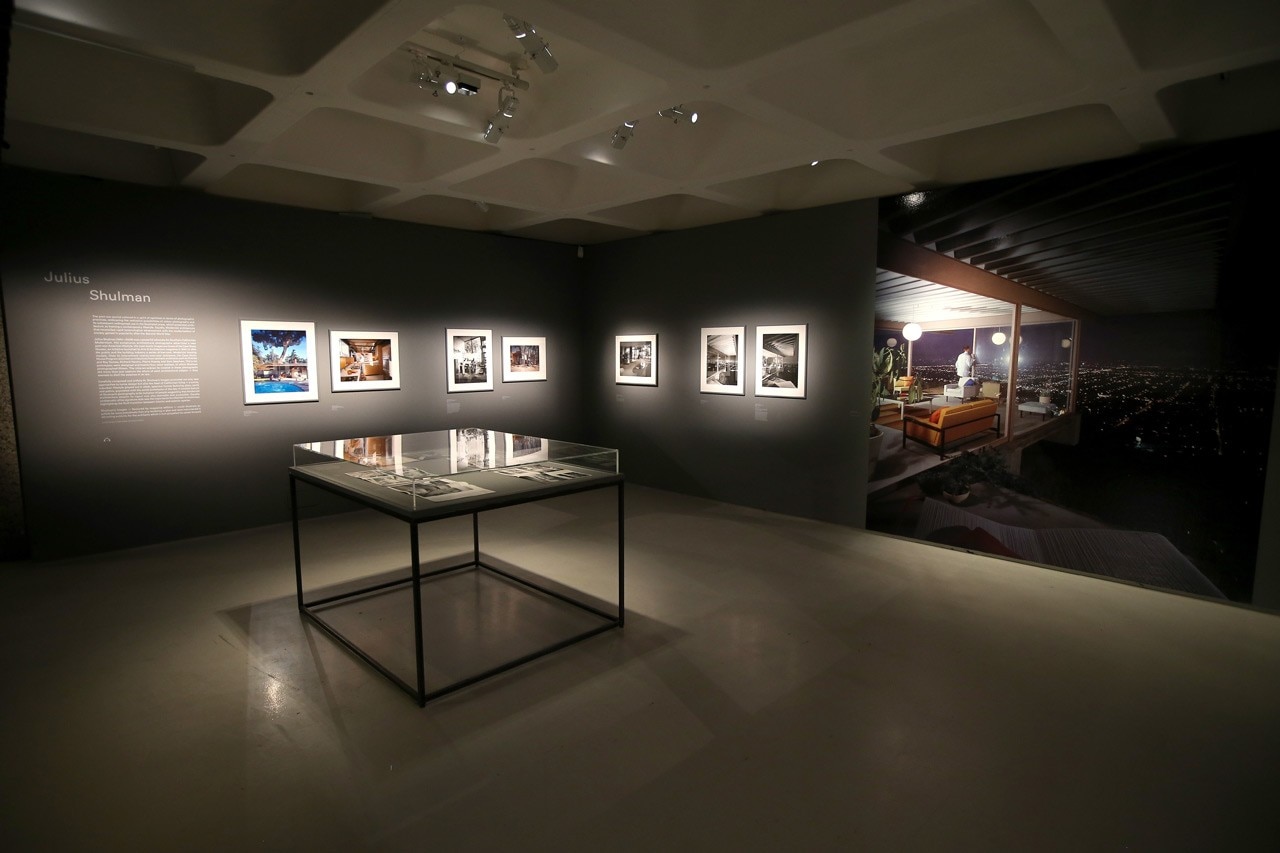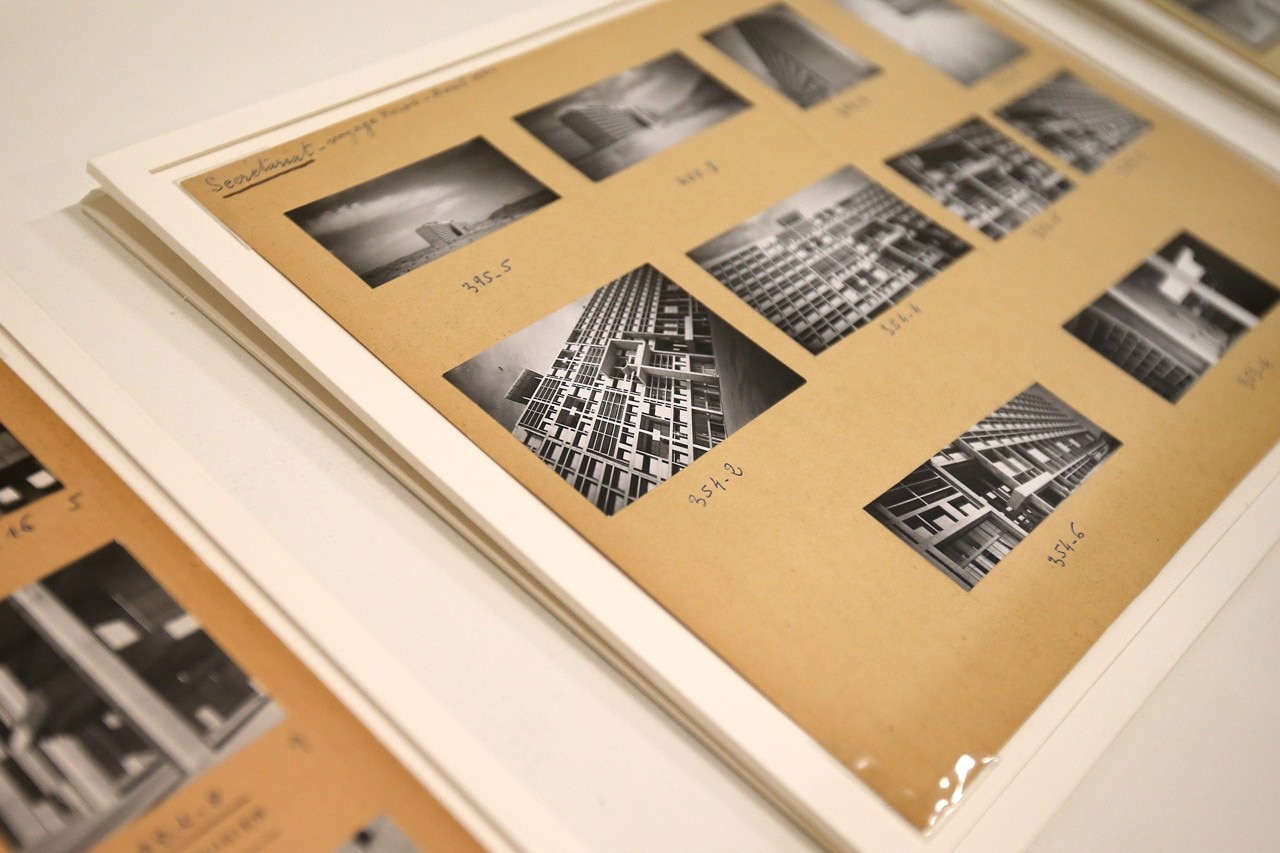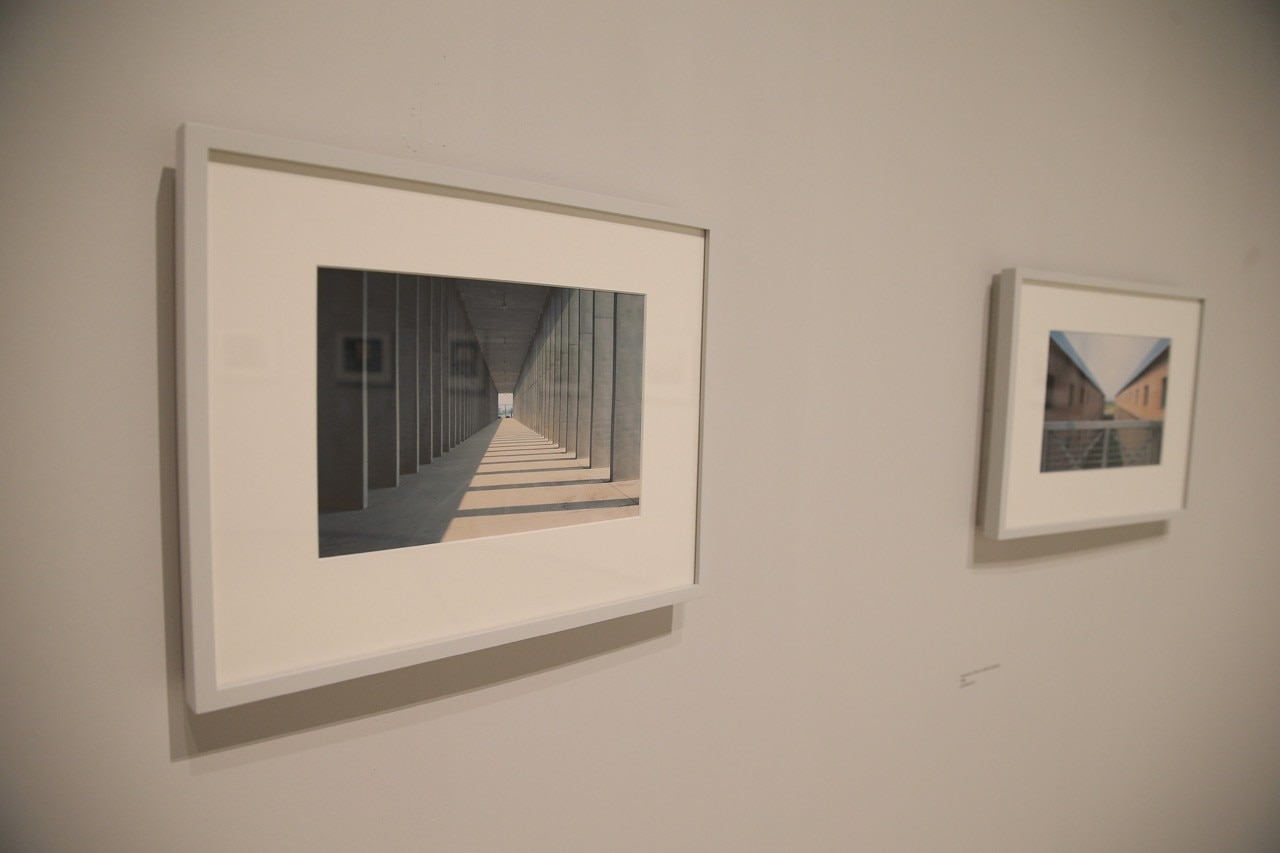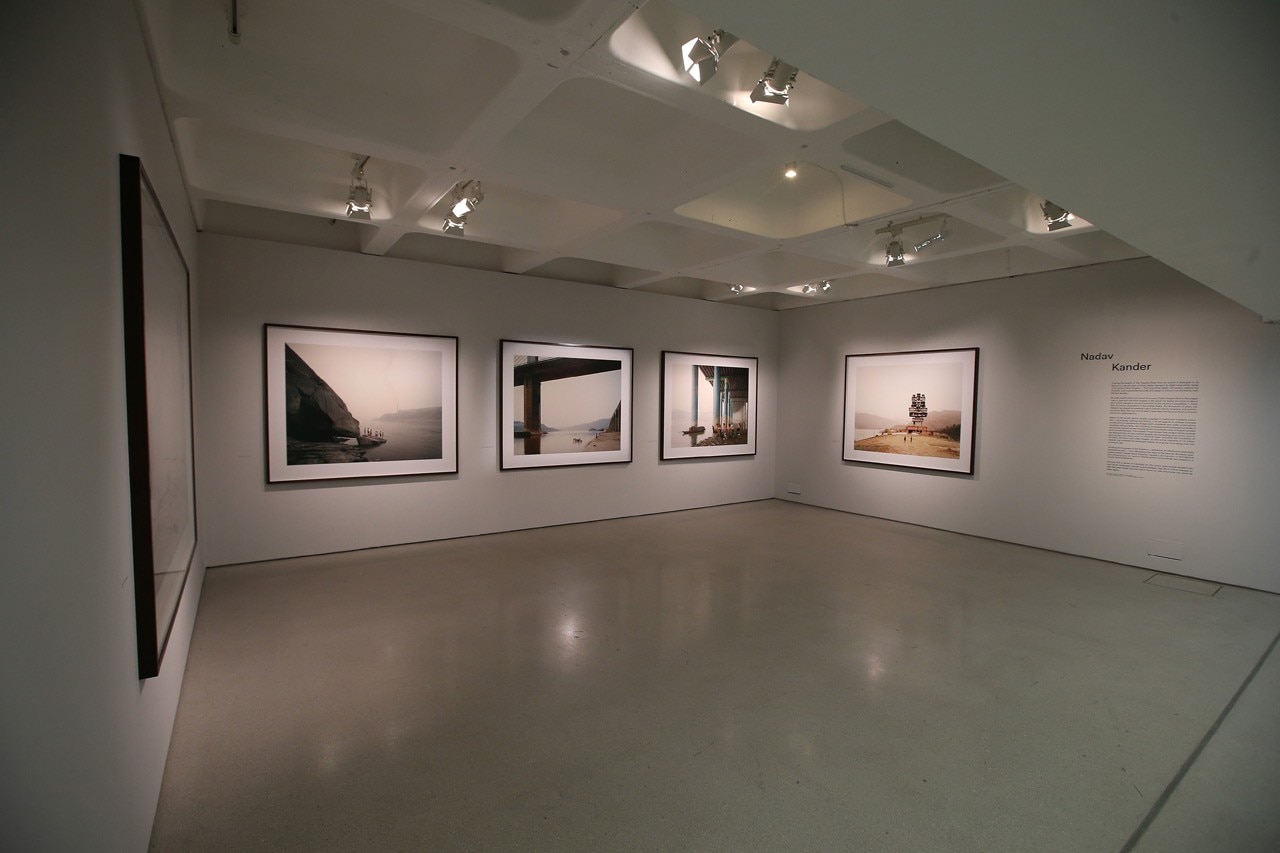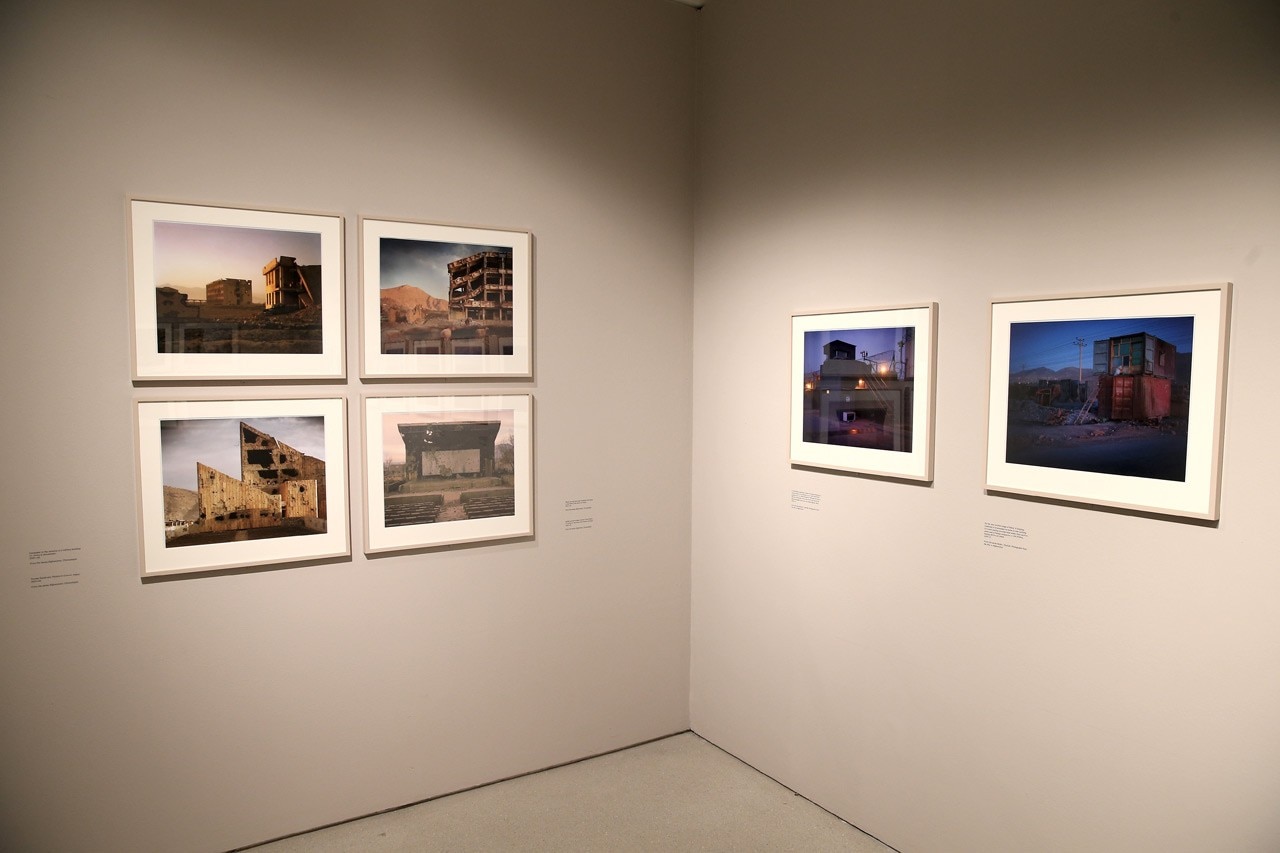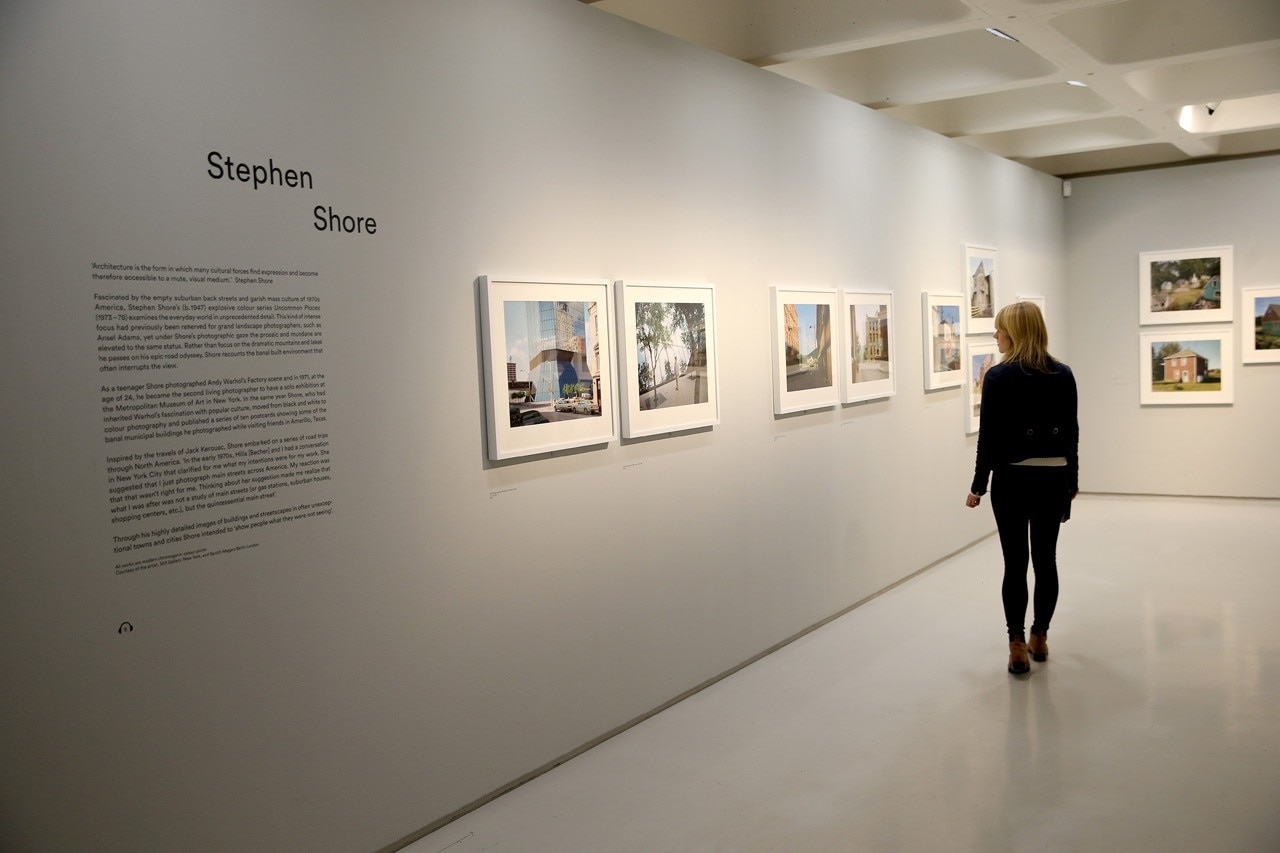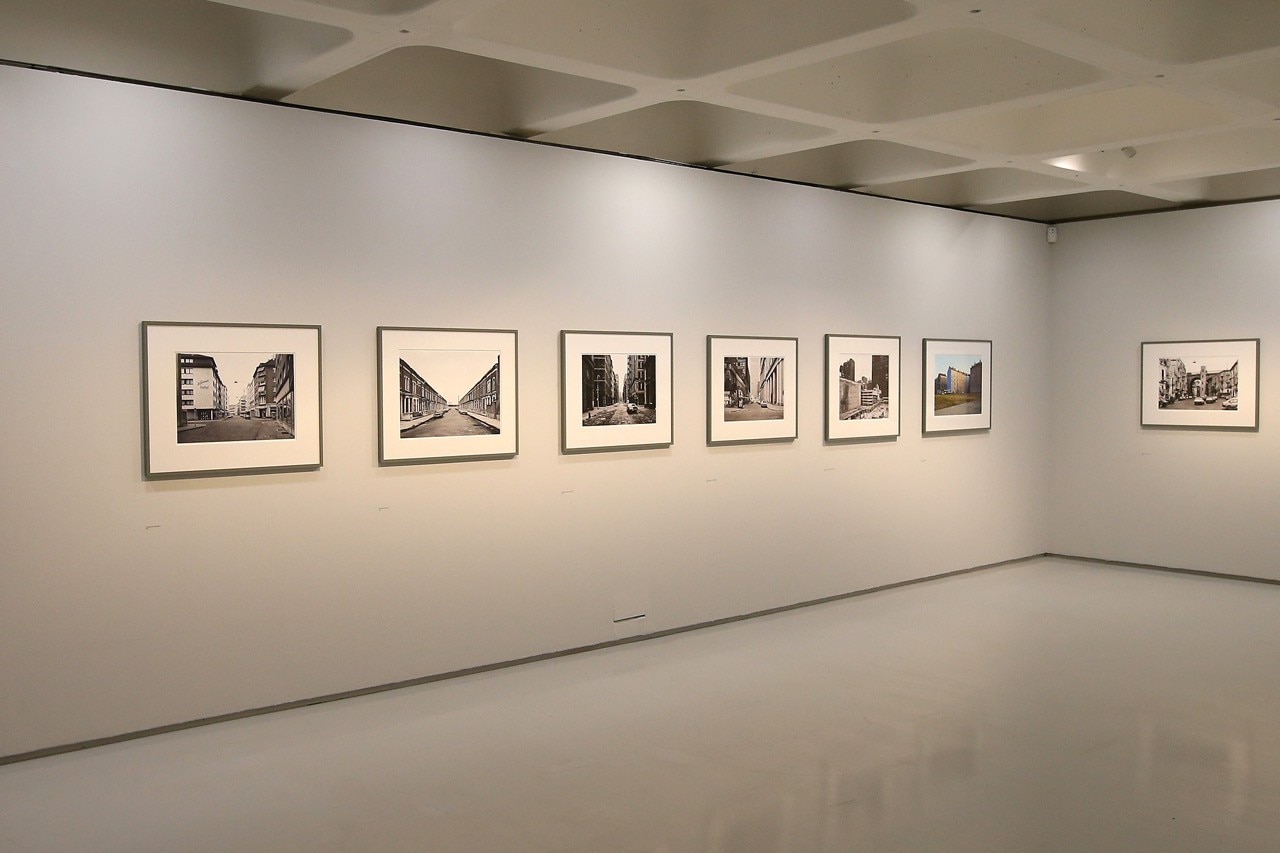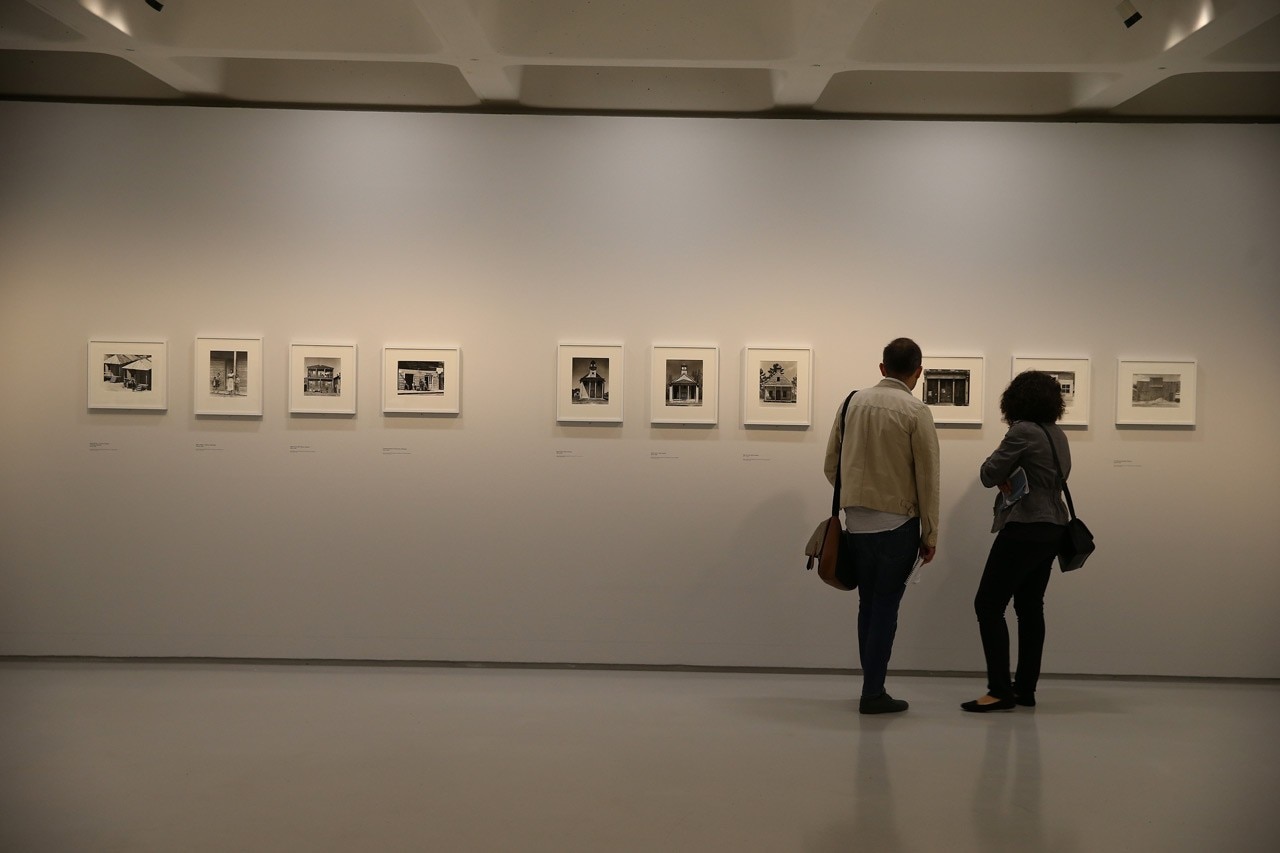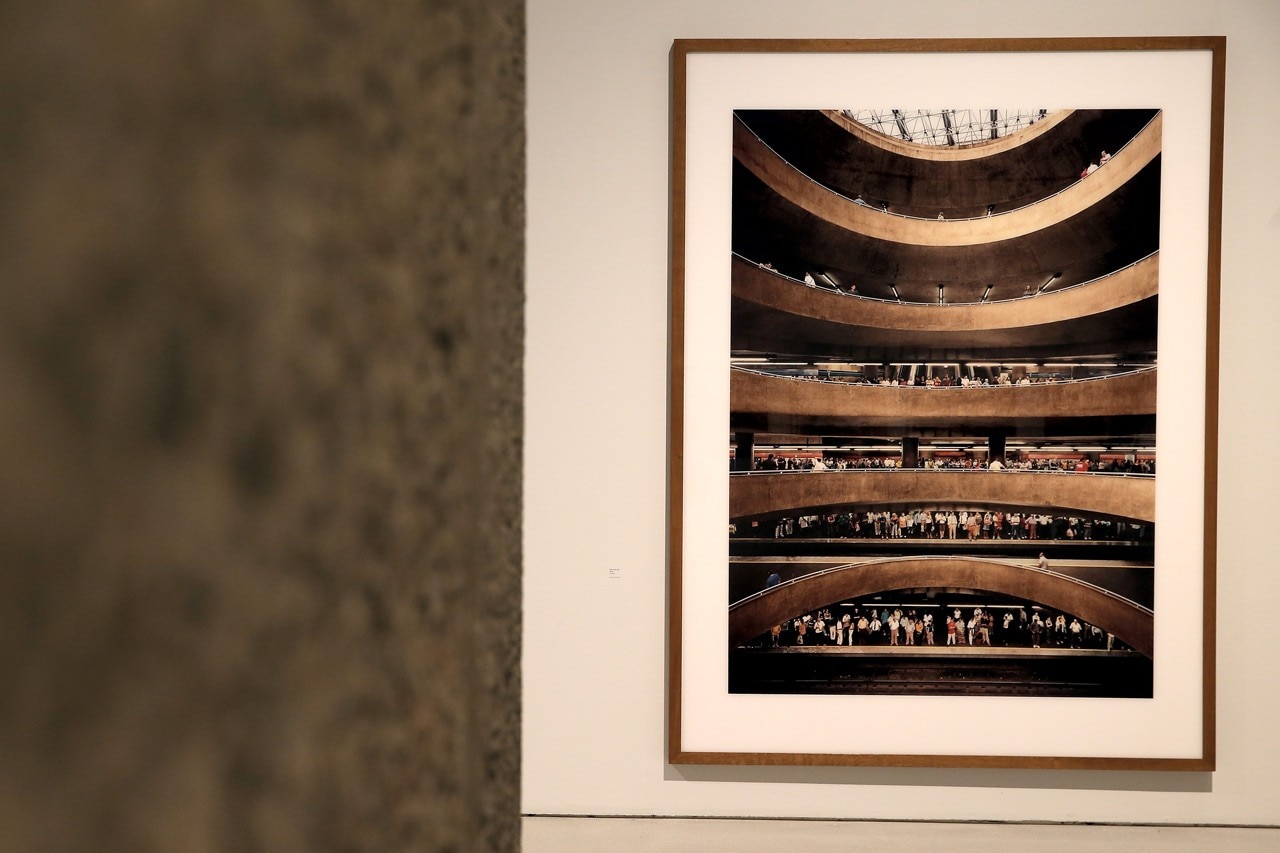
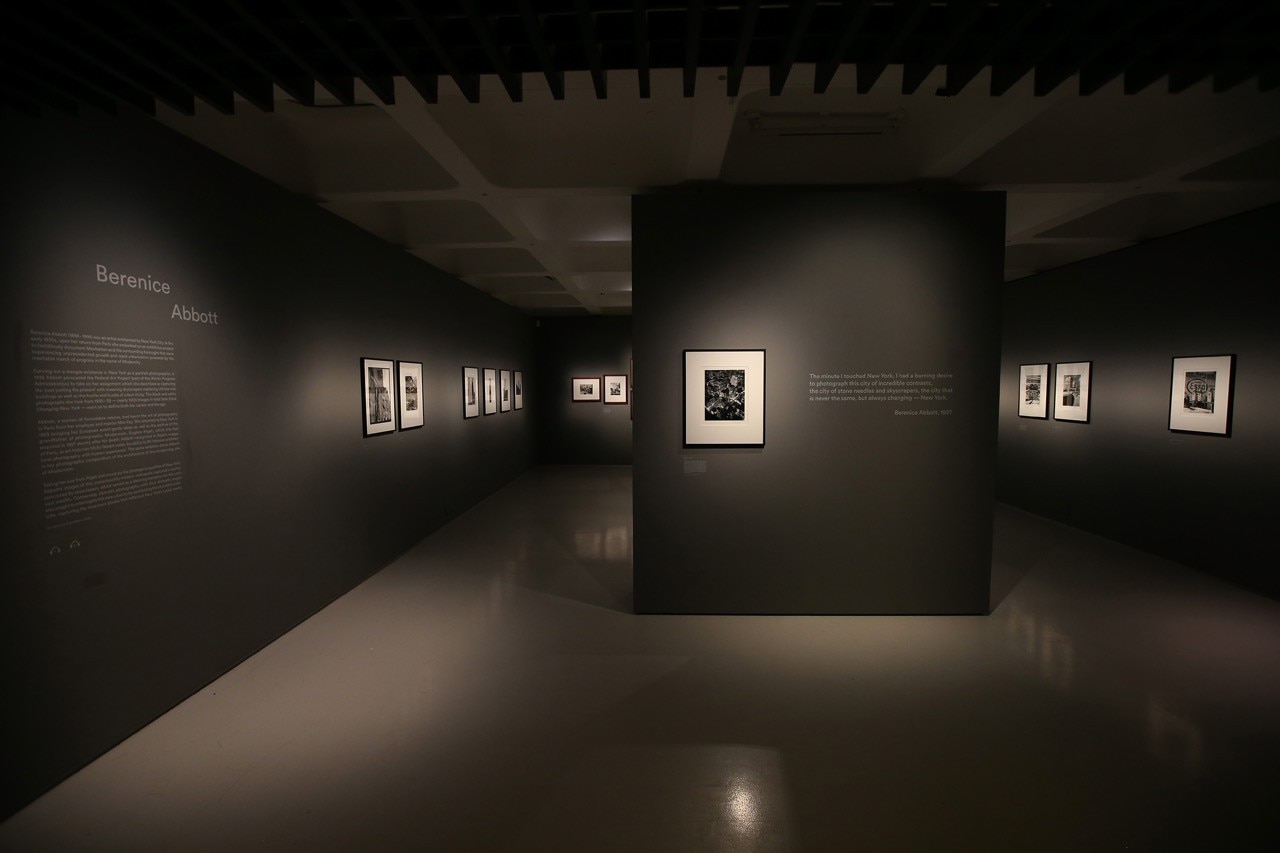
Organised both chronologically and thematically, the exhibition opens with Berenice Abbott’s photographed project Changing New York (1935-1939) that captured the transformation of New York into a modernist metropolis, focusing her lens on the dramatic changes the city was undergoing with towering skyscrapers replacing older low-rise buildings.
At the same time, Walker Evans was on assignment for the Farm Security Administration photographing the vernacular architecture of the Deep South which bore witness to the adverse consequences of modernity. In contrast, Julius Shulman’s photographs of the Case Study Houses programme (1945–1966) capture the experimental architecture and ideal modern lifestyle encapsulated in California in the 1950s. Le Corbusier quickly gauged the power of photography to communicate the essence of his architectural vision which was perfectly expressed in Lucien Hervé’s cinematic documentation of Chandigarh – a modernist symbol of a newly independent India.
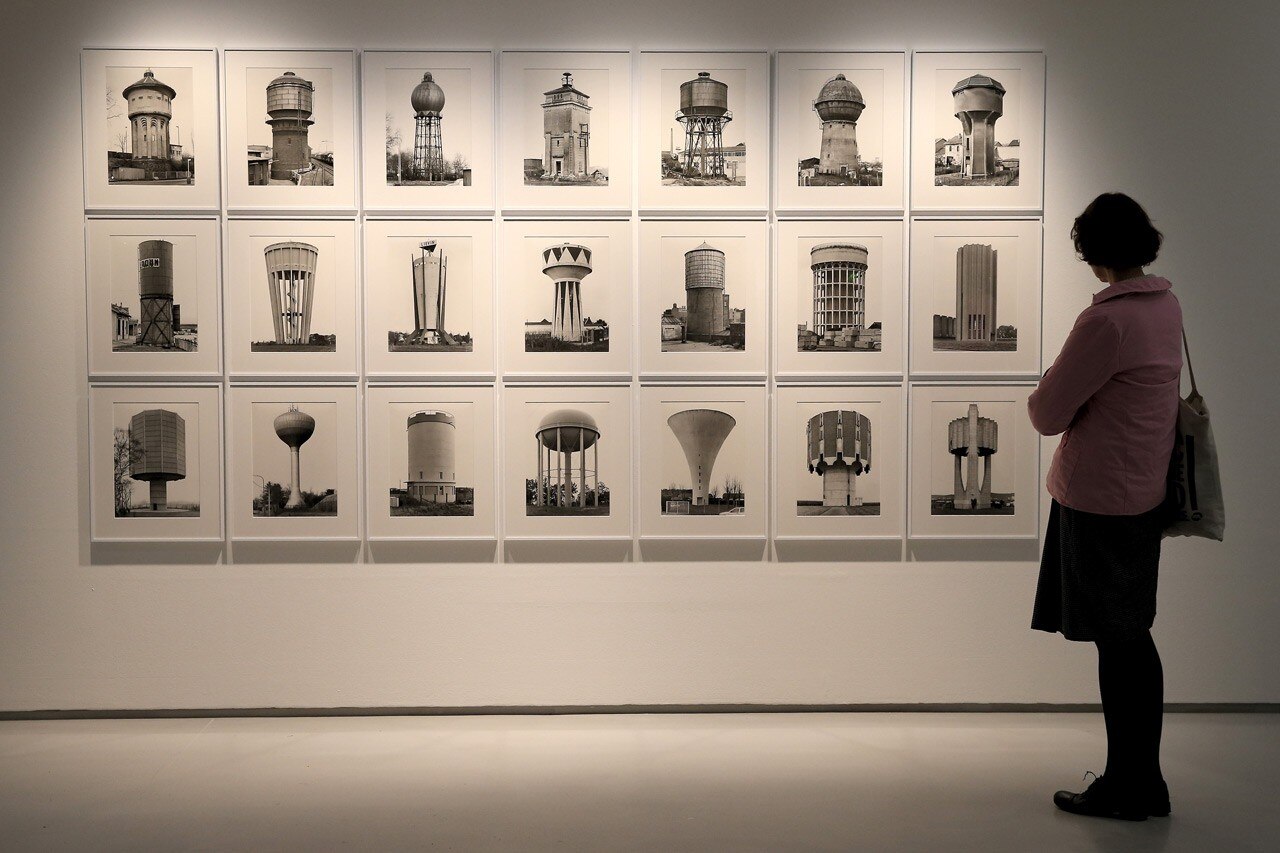
Reflecting on the legacy of Walker Evans’s objective documentary style and interest in vernacular architecture, which influenced a generation of photographers across the USA and Europe during the 1960s and 70s, the exhibition goes on to consider the works of Ed Ruscha, Bernd and Hilla Becher, Stephen Shore and Thomas Struth.
Combining the cityscape of Los Angeles with the vernacular, Ruscha’s photobooks Some Los Angeles Apartments (1965) and Thirtyfour Parking Lots (1967) communicate a particular urban experience whilst the decaying industrial European landscape is the focus of Bernd and Hilla Becher’s comprehensive archive of arcane industrial archetypes. Stephen Shore’s explosive colour photographs from Uncommon Places (1973–79) and Greetings from Amarillo, “Tall in Texas” (1971) and the unsentimental street scenes of Unconscious Places by Thomas Struth all reference Evans’s nascent documentary approach, whilst reflecting on the repetition and banality which modernity can incite.
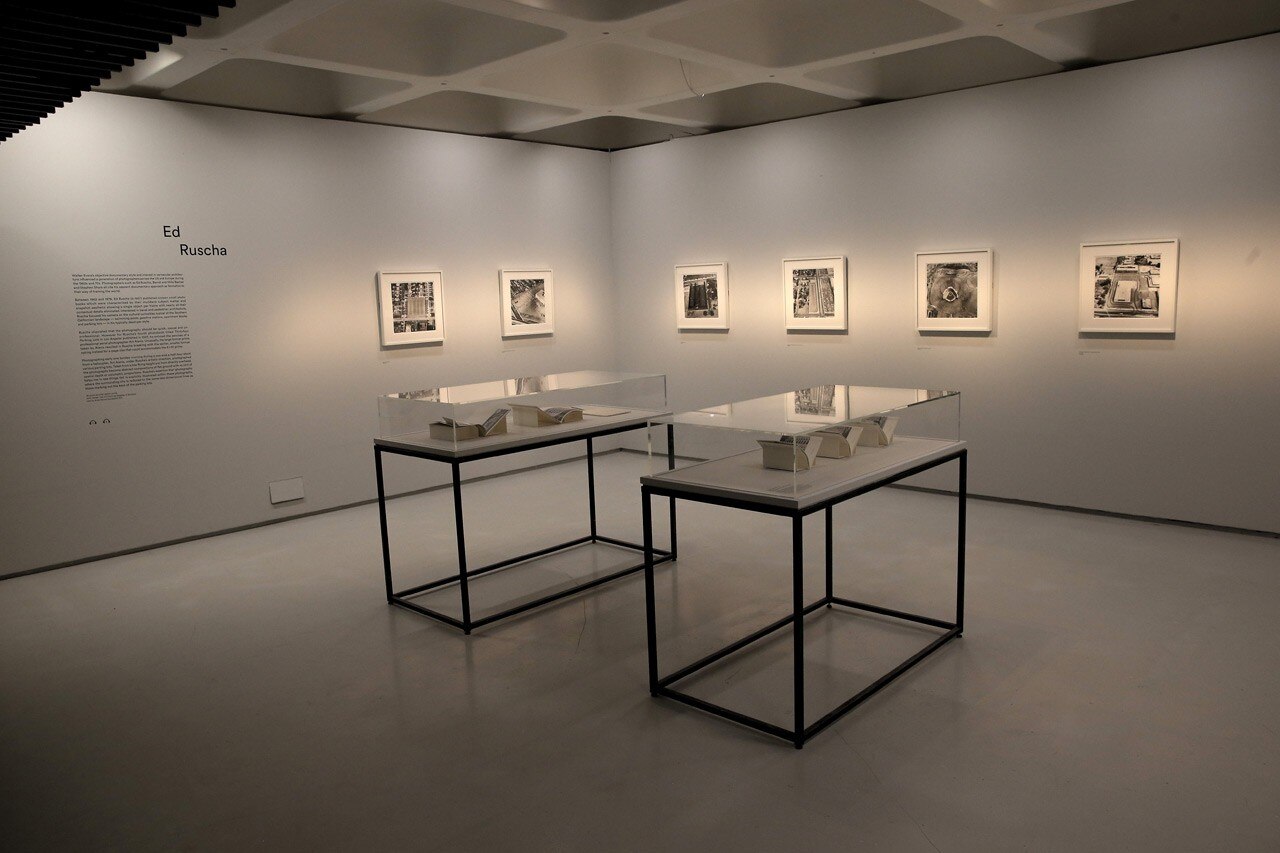
Considering photographers’ interpretations of and their response to architects and iconic buildings of the modern age is the focus of a section of the exhibition that reflects on the symbiotic relationship between photography and the architectural subject.
Providing layers of narrative and injecting ancillary meaning to the physical space, these photographs offer a way of understanding the architects’ intentions in relation to the lived reality, as exemplified in Luigi Ghirri’s lyrical response to Aldo Rossi’s architecture; Hélène Binet’s studies of fragments of Daniel Libeskind’s Jewish Museum, Berlin; deliberately blurred photographs by Hiroshi Sugimoto of iconic 20th century architecture; Luisa Lambri’s exploration into the reality of inhabiting and living a modernist lifestyle in domestic Modern architecture; and the response to the impersonality of individual works of architecture in Andreas Gursky’s monumental photographs.
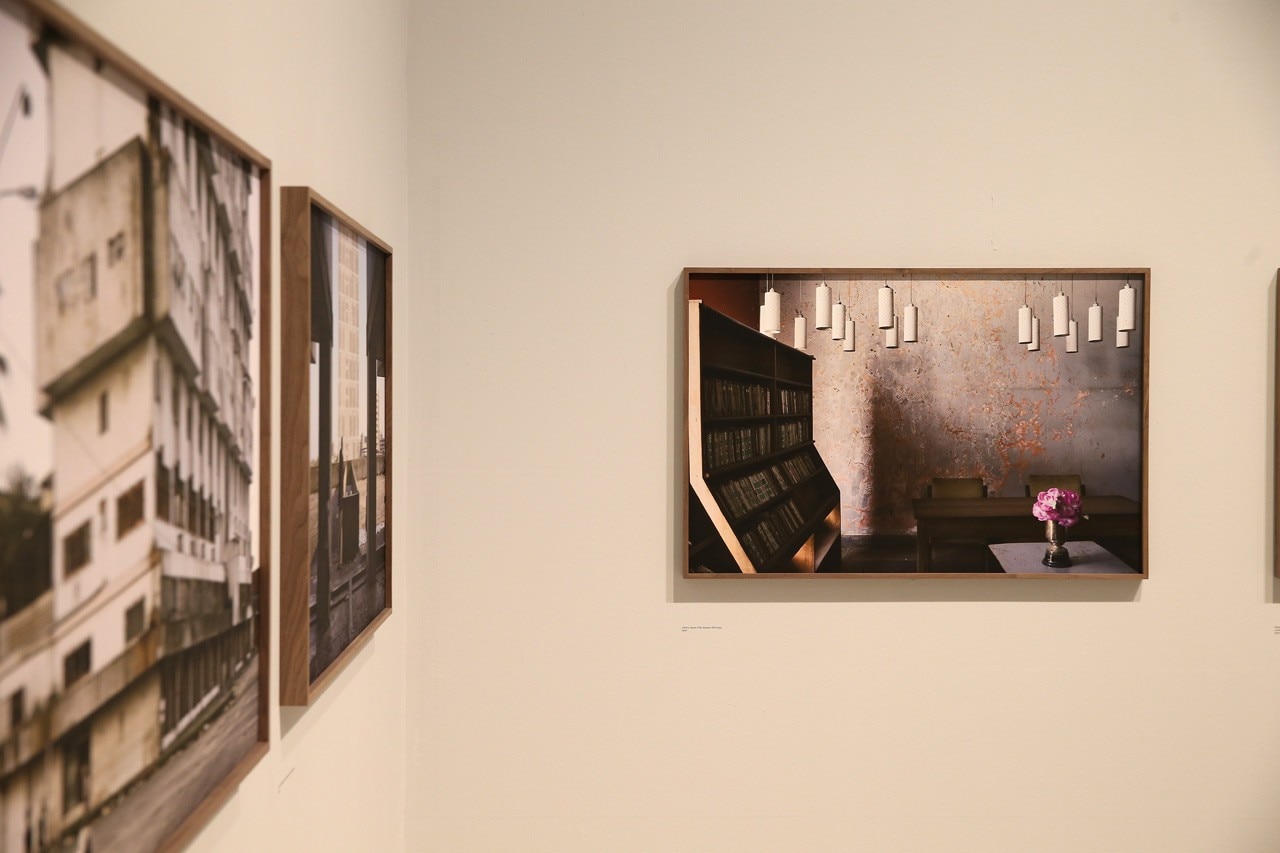
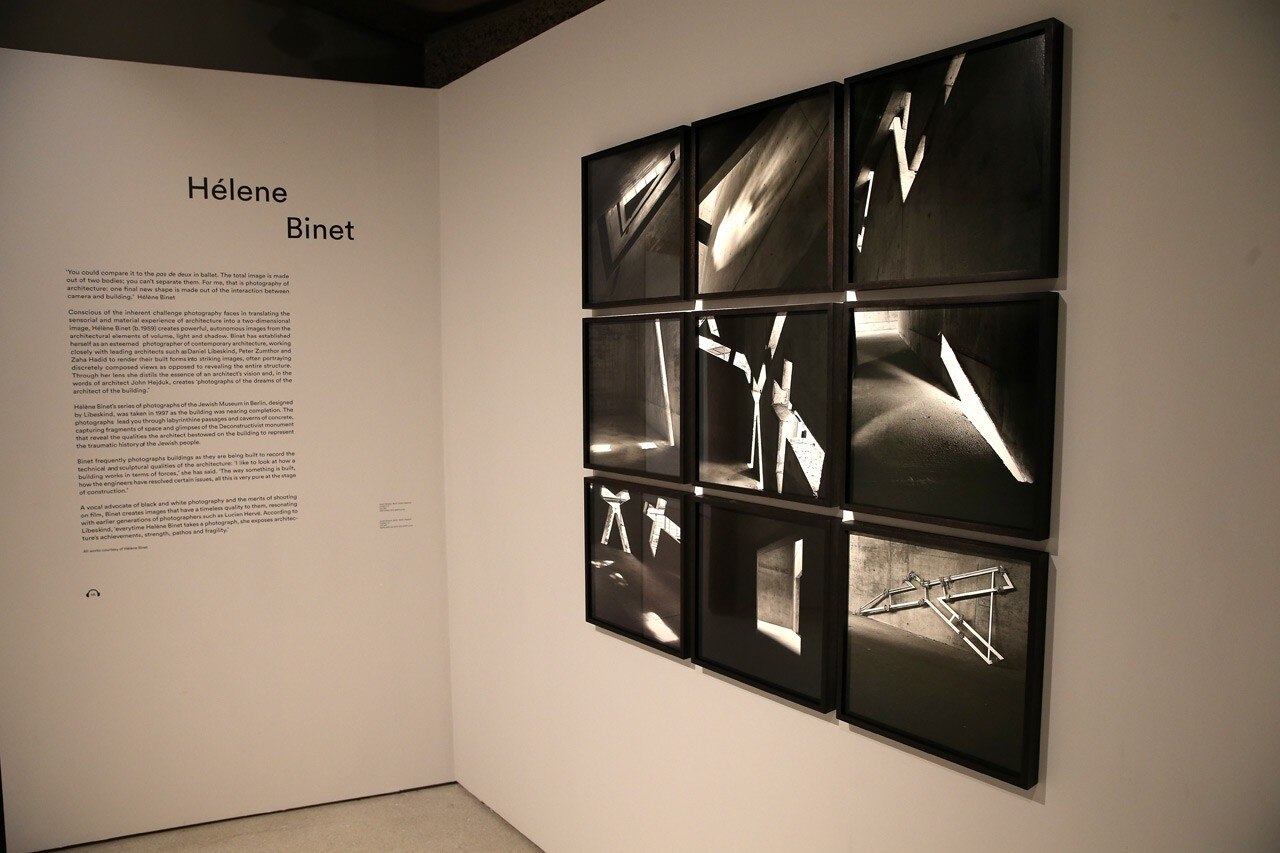
until January 11, 2015
Constructing Worlds
Photography and Architecture in the Modern Age
curated by Alona Pardo and Elias Redstone
designed by Office KGDVS
Barbican Art Gallery
Barbican Centre
Silk St, London


